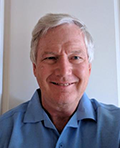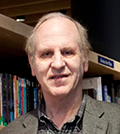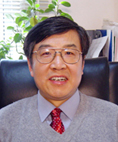Keynote Speakers
 Phil Hubbard Phil Hubbard
|
Introduction
Philip Hubbard is Senior Lecturer in Linguistics and Director of the English for Foreign Students Program at the Stanford University Language Center. A professional in computer-assisted language learning (CALL) for over 30 years, he has published in the areas of CALL theory, research, methodology, evaluation, listening, teacher education, and learner training. His more recent projects focus on principles for mobile learning, a framework for CALL theory, and teaching reflectively with technology. He served on the task force that developed the TESOL Technology Standards and is associate editor of Language Learning & Technology and Computer Assisted Language Learning. Plenary speech Title: Five keys from the past to the future of CALL Abstract: Current trends in CALL such as mobile learning, gamification, and use of social media appear to represent major shifts in the digital language learning landscape. However, these and other applications of technology to mediate language learning may be informed by reflecting not only on the present but also on relevant insights from past research and practice. In this talk, I draw on selected studies and my own experience to identify five key lessons learned. These lessons involve understanding 1) the cycle of technology adoption, 2) the dimensions of technology mediation in the language learning process, 3) the promise and limitations of CALL theory and research, 4) the importance of teacher education in an age of continuous change, and 5) the value of learner training for effective technology use. Teachers, researchers, and developers alike can profit from these lessons in creating and implementing new technologies, tasks, and activities. |
 Regine Hampel Regine Hampel
|
Introduction
Regine Hampel is Professor of Open and Distance Language Learning at the Open University, UK, and Associate Dean (Research Excellence) in the Faculty of Wellbeing, Education and Language Studies. Her own research explores the impact of using new technologies for language learning and teaching, focusing for example on the affordances of digital media, activity design, learner interaction and communication, online literacies, and teacher training. Recent projects include 'Developing Online Teaching Skills' (DOTS), which was funded by the European Centre for Modern Languages. The project resulted in an edited book (Hampel & Stickler 2015). Plenary speech Title: The disruptive effect of technology on communication and meaning-making in the language classroom: a complex systems theory approach Abstract: The new digital media have the potential to transform language education. Although technology is embedded in students’ lives today, there is an assumption by many educators that its use is inconsequential. So how can we ensure that our learning and teaching practices realize this potential and encourage a new learning ecology? By using complex systems theory, this plenary presentation will take an innovative approach to understanding how technologies impact on communication and meaning-making in language learning and teaching. Recent studies provide evidence for the disruptive effect of the new media on traditional language learning settings and for a phase shift that is reshaping language education by opening up new ways of constructing meaning and knowledge, creating new interaction patterns, and introducing real-world communication into the classroom while also posing new challenges. The presentation will conclude by highlighting what teachers, institutions and policy makers can do to respond to this shift. |
 Thomas Robb Thomas Robb
|
Introduction
Thomas Robb, Ph.D, U. of Hawaii, is Professor Emeritus, Kyoto Sangyo University, where he was Chair of the Department of English, Faculty of Foreign Languages until he retired in March of 2017. He is a long-time user of CALL and the Internet, and has created a number of websites and applications for various student projects, interactive learning and professional exchange. He has been President of JALT, has been on the Board of Directors of International TESOL, a past president Pacific CALL. He is the founder of the annual GLoCALL conference and chair of Extensive Reading Foundation. Plenary speech Title: Getting them to do it: Why tracking is important Abstract: Computer Assisted Language Learning has gone a long way since the early days, when students had to study in a computer laboratory using software that was installed on each computer with no means for the teacher to watch or record what each student was doing. Now the CALL lab is virtually a thing of the past, but one problem has persisted since the early days: Many teachers still do not know whether their students are using assigned software or not because there is no tracking mechanism for it. Tracking is important for one clear reason: Without it, most students will not do the work! In this presentation we will look at how we, as teachers, can keep track of what our students are actually doing -- or not doing. Based on the principle that only trackable activities should be assigned, we will survey what is available, and how we can make assigned activities ‘trackable’. All tracking functions, however, are not equal. We will survey a number of sites to understand what is essential for a truly usable tracking function. |
 Vivien Berry Vivien Berry
|
Introduction
Dr Vivien Berry is Senior Researcher, English Language Assessment at the British Council, where she leads an assessment literacy project to promote understanding of basic issues in language assessment, including the development of a series of video animations, with accompanying materials. With external colleagues, she also investigated the speaking construct in face-to-face and video-conferencing delivered modes of an international speaking test. She has published extensively on many aspects of language assessment and regularly presents research findings at international conferences. Vivien has also worked as an educator and educational measurement/assessment specialist in tertiary contexts in Europe, Asia and the Middle East. Plenary speech Title: Using technology in language assessment: Do the constructs remain the same? Abstract: Until recently, widespread use of technology in education was more prevalent in language learning contexts than language assessment contexts. However, the use of technology can play a role in changing and expanding test constructs, thus enabling more meaningful and authentic assessment. One such application of technology is the use of video conferencing in assessing spoken language, meaning that face-to-face interaction no longer depends upon physical proximity within the same location. Recent technical advances have made it possible for users in two or more locations to successfully communicate in real time through audio and video. |
 Yueguo Gu Yueguo Gu
|
Introduction
Yueguo Gu is a research professor of linguistics, and head of the Contemporary Linguistics Department, the Chinese Academy of Social Sciences. He is also Pro-Vice-Chancellor of Beijing Foreign Studies University, President of China Association for Computer-Assisted Language Learning (ChinaCALL), and Founding Dean of the Institute of Online Education and Guest Professor of the University of Nottingham. Plenary speech Title: Life-Long Learning in the Life-Course Perspective: A Big Data Approach 摘要: Computer-Assisted Language Learning (CALL), Web-based delivery of course included, is overwhelmingly recognized as a tool being particularly conducive to life-long learning. Endorsing this assumption quite heartily, this paper proposes two things for the “aged” community to evaluate — being aged in the sense that research into life-long learning has enjoyed a long history. It has another intended meaning associated with life course, which is a technical term borrowed from studies of lifespan human development (LHD). LHD is concerned with growth and development from “womb to tomb” (see Feldman, 2011; Morgan and Kunkel, 2011). Gu (2016) models this process of development in terms of multi-dimensional data building with a “magic” formula — the (dimensional) self {…{}…}. According to this formula, life-long learning is just one of the dimensional self that grows along side with many other dimensions of the self, the biological self, the physical self, the cognitive self, the meta-self and so on. This paper, apart from demonstrating how the model works with “traditional” view of life-long learning, proposes a tripartite structuring of life-long learning as a guiding principle for content developing. The traditional view refers to the practice of using the technology of whatever kind to present what is taught in formal education. The tripartite structuring refers to the three macro phases of development over a life span: (1) the immature but rapid growth, (2) the mature and stable development and (3) the aging and declining development. Corresponding with this structuring are three overall designing principles for content development: (1) content for general intelligence development (i.e., developing multiple selves); (2) content for subject area development; and (3) content for anti-aging therapy. The paper will demonstrate the last drawing the findings from studies of Alzheimer’s disease patients by the author himself and others. |